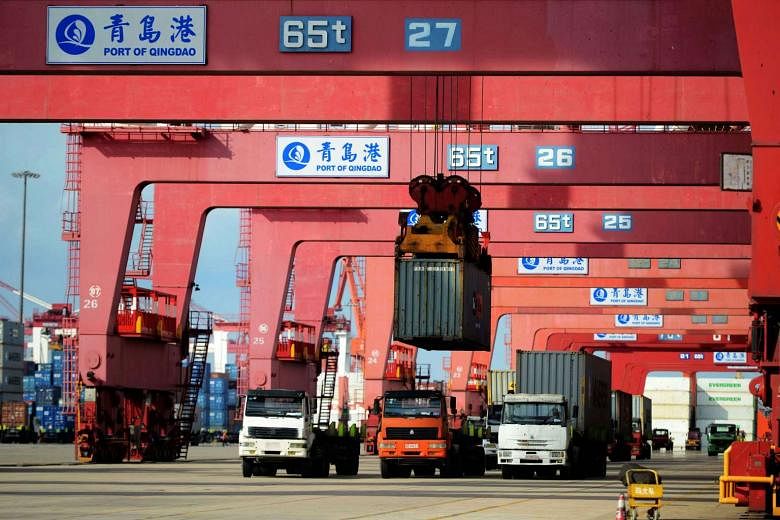SINGAPORE (Bloomberg) - After years of looking to China as a source of growth, South-east Asian countries are turning their attention back to the world's largest economy on the other side of the Pacific Ocean.
Exports to the US from all but one of the six largest economies in Asean increased in the first quarter from a year earlier, according to the most recent data from the International Monetary Fund.
Shipments to China declined in four of the countries in the same period.
The improvement in US sales comes against the backdrop of a contraction in trade across East Asia, the manufacturing hub of the world. It also shows the US - Asean's largest trading partner as recently as 2007, but now ranked third behind China and Japan - is making a comeback as a key source of demand for Asian goods.
"The US is one of the few places where demand is still growing," Mr Trinh Nguyen, a senior economist at Natixis SA in Hong Kong, said by phone. "The US used to be the engine of growth in Asia, then it got sidelined by China and it's now back."
The stronger dollar is helping by making US imports from Asia cheaper, while consumer spending is also holding up well.
Singapore's exports to the US climbed 10 per cent in the first quarter from a year earlier, reflecting in part the strong demand for medicines and other pharmaceutical products produced by the city state, according to Mr Song Seng Wun, an economist at CIMB Private Banking in Singapore. Vietnam's shipments to the US rose 21 per cent in the period.
"Vietnam in particular has the appropriate product mix, they have lots of cheap consumer products including textiles," he said by phone.
Trade with the US underscores the importance of the Trans-Pacific Partnership, a 12-nation free-trade agreement that would include countries such as Japan, Canada and Australia to cover 40 per cent of global trade. The TPP has been a centrepiece of President Barack Obama's economic diplomacy in Asia, but doubts exist over whether the US will ratify the pact.
The World Bank estimates that TPP could raise gross domestic product by an average of 1.1 per cent in member countries by 2030.
The US economy grew an annualised 0.8 per cent in the first quarter, modest compared with China's 6.7 per cent year-on-year expansion. The US, however, still dominates in terms of spending: it imported US$2.2 trillion (S$3 trillion) worth of goods and services last year, compared with US$1.6 trillion for China, according to IMF data.

